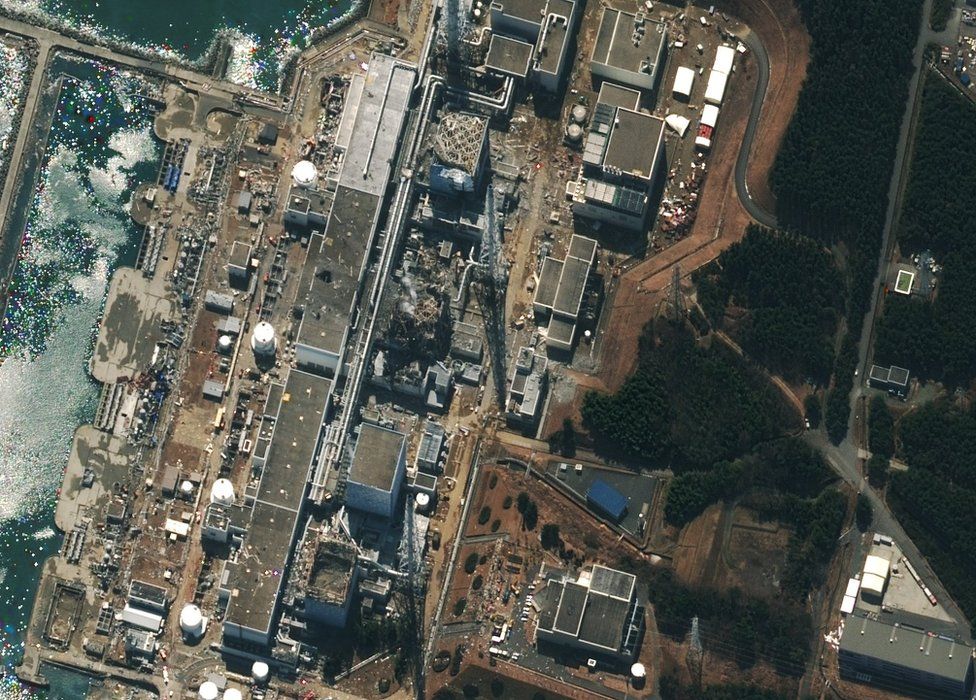12:19 On March 11 2022 it was exactly 11 years since March 11 2011 when after an earthquake and subsequent tsunami, 3 of the 6 reactors each in a separate building (Nr.4, 5 and 6 were shutdown for maintenance) at Fukushima power plant first exploded and their core melted down. Reactor Nr.4 spent rods pool exploded 4 days later but core did not melt down.
As power for cooling the reactor ceased because of emergency shutdown due to earthquake, and backup generators were flooded by tsunami, the coolant boiled end evaporated, exposing the rods to air and the high temperature generated steam and hydrogen was generated and exploded. Spent fuel rods on top are much more radioactive than new ones and contain elements that are daughters of uranium created during their useful service period, like plutonium, cesium, strontium, iodine. Because of explosions, those were spread contaminating a large area. Over one hundred thousand people were evacuated and some cannot return even today. Not a good idea to store spent fuel rods on top of reactors, for sure, per GE design.
However even the worst looking reactor, nr.3, image above does not look as bad as the damaged (3000 MW thermal, 1000 MW electric, for comparison one wind turbine is about 1 MW) Chernobyl Nr.4 (of 4 built next to each other, picture below) reactor were they were not spent fuel rods in pools on top. Apparently only one of the walls, the structure in front and the roof were blown. And they were two explosions heard by witnesses, in other words the reactor having the graphite moderators jammed because of a bad maneuver during an test boiled and exploded in two stages. The man in the video tries to explain that the reactor was brought in a state of low power (200 MW) with all rods pulled out?, that did not allowed the turbine to produce enough electricity to power the pumps to cool the reactor when the rods were inserted and removed some of the water. Whatever.
Weirdest part. Did you know that one of the other reactors was shut down in 96 and another in 2000 after being restarted and at least one of the reactors still ran hours after explosion (i can swear i read that on the Wikipedia page, and not it's gone)? So there was enough power to the cooling pumps from the other reactors.
Now that i first examine these things keep asking myself. Why don't they build these reactors or at least the core part of the reactors underground deep enough not to cause such disasters if they fail? (This picture must have been taken the next day or something, cause other subsequent pictures show a much greater damage, due to burning of the core).
Searching for that phrase with google (first they wanted to shut it down but an engineer kept running nr.3 (or 1 or 2, or maybe all of them, can't remember until morning), i found this. On August 20 2004 London based New Scientist published an interview with a then 24 years old engineer who was working inside Chernobyl when disaster happened. Article is by subscription only but there is a transcript on a different site. From the picture above and the interview one can consider the hypothesis Chernobyl reactor was hit by a missile.





No comments:
Post a Comment
Friendly comments welcome
Note: Only a member of this blog may post a comment.